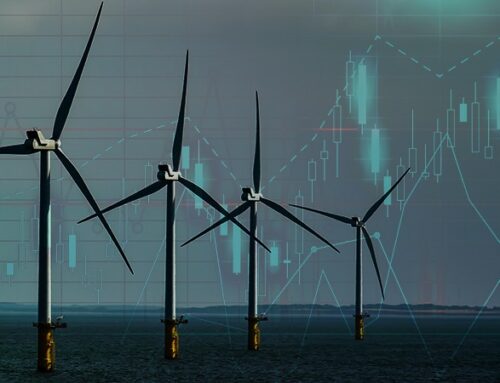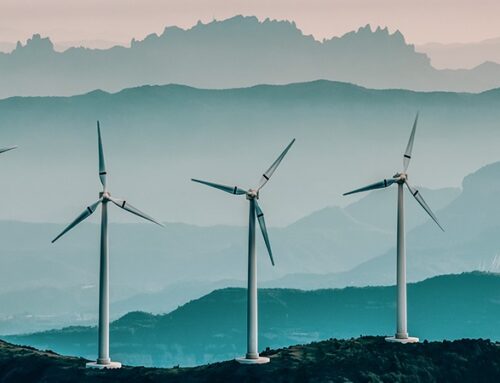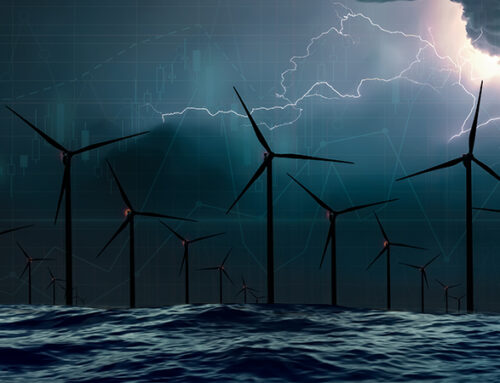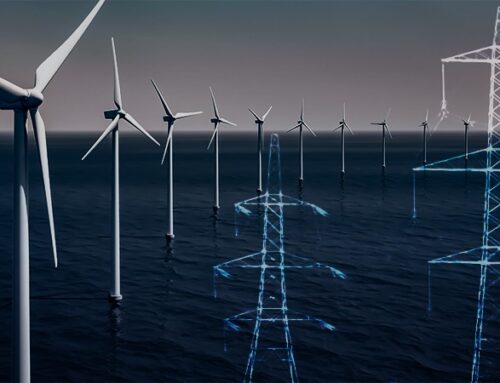The Californian energy market has been in the news recently: first there was the much heralded announcement that the state had managed to meet 100% of electricity demand with renewable energy sources. This magnificent feat lasted for almost 15 whole minutes mid-afternoon on Saturday 30 April, which was hailed as a “historic day”. More sobering have been recent warnings that the state is running out of energy and may face blackouts this summer.
Milestone in renewable generation…
Powering a large electricity grid from 100% intermittent renewable generation is indeed a milestone, but it is far from sufficient in demonstrating the viability of such resources as the primary source of generation. At the time in question, two thirds of the 18.7 GW of demand was met by solar (12.4 GW) with the rest coming from wind, geothermal, and other renewable sources. After almost 15 minutes the contribution of renewables fell to 97%.
“California achieved 100% renewable energy today. Very clear we can achieve clean energy everyday before 2030 if we cut the fossil fuel subsidies and political inertia,”
– Daniel M Kammen, professor of energy at UC Berkeley
59% of the state’s electricity came from renewable and zero-carbon sources in 2020 (ie including nuclear), and the Governor is proposing a US$ 2 billion investment to boost the transition to 100% clean electricity by 2045. More broadly, President Joe Biden has pledged to de-carbonise the US power grid by 2035.

The state of California, produces more renewable energy than any other US state, helped along by its almost year-round sunshine. Which begs the question, why has it taken so long to achieve this milestone and why was it so short-lived, particularly on a weekend when demand is lower. California has been a leader in the deployment of solar generation (and the first to make the “duck curve” famous which indicates the daily impact of solar power on the transmission system). But the Californian experience indicates the difficulties in running large electricity grids on intermittent renewable generation – even in sunny locations.
This was previously demonstrated in the Indian province of Bihar, where Greenpeace invested over US$ 400,000 in 2014 to set up 70 kW of photovoltaic cells on the rooftops of public buildings throughout the village of Dharnai, a community of about 3,200 people. The scheme also included 224 batteries. The village had been without electricity for three decades, so this project was welcomed with some excitement. However, problems emerged almost immediately, and when dignitaries arrived to inaugurate the grid, villagers protested that they wanted “real electricity, not fake electricity”! By this they meant power from the central grid, generated mostly using coal. From the outset, the system could not cope with demand and villagers faced rationing.
In fact for Dharnai, the project was an indirect success – it highlighted the plight of the village to people with the power to effect change, and the following year a new transformer was installed re-connecting the village to the regional electricity grid. Participation in the solar scheme fell from 380 households at the start to just 120 a year later. Electricity from the grid was also cheaper than that from the solar scheme.
“In the first three years, it worked well and people were using it. But after three years the batteries were exhausted and it was never repaired. So now, while the solar rooftops, CCTV cameras and other infrastructure are intact, the whole system has become a showpiece for us. No one uses solar power anymore here,”
– Ravi Kumar, local shopkeeper
Three years after the inauguration, the mini-grid started collapsing with the batteries failing due to lack of maintenance. Now the main project site is being used as a cattle shed, and all that remains of the scheme are a few solar pumps installed on farmland in the village, which are operated and maintained by the farmer who benefits from free electricity to irrigate his fields during the day, which is the only time he wants to operate the pumps.
…while electricity shortages loom
Californian state officials last week forecast that the electricity grid lacks sufficient capacity to keep the lights on this summer and beyond due to the effects of heatwaves, wildfires and other extreme events, in a possible repeat of the rolling blackouts seen in the summer of 2020. In an online briefing with reporters, officials forecast a potential shortfall of 1.7 GW this year, with a possibility of a 5 GW shortage if negative events conflate. A capacity shortage on this scale could leave between 1 million and 4 million people without power.
A capacity shortfall of about 1.8 GW is forecast for 2025 according the California Energy Commission, Public Utilities Commission, California Independent System Operator and the Governor’s office. Annual electricity costs to consumers are also expected to increase between 4% and 9% between now and 2025.
“We continue to see climate-change conditions are impacting our energy system in unprecedented ways…We know that reliability is going to be difficult in this time of transition,”
– Alice Reynolds, California Public Utilities Commission President
California is experiencing a drought – possibly the worst in 1,200 years – which is seeing its reservoir levels fall significantly, putting hydro reserves in doubt. The hot weather associated with the drought is also boosting air-conditioning demand. The Hoover dam at Lake Mead, the largest reservoir in the US, has reduced generation capacity by about 25% due to low water levels, and the state’s system operator has asked residents to conserve power to avoid triggering brownouts. But the problem is exacerbated by the retirement of conventional generation, as intermittent renewables are deployed across the state – a problem that is also causing trouble in the US Midwest, leading Texas to consider implementing a capacity market.
“We need to make sure that the we have sufficient new resources in place and operational before we let some of these retirements go. Otherwise we are putting ourselves potentially at risk of having insufficient capacity,”
– Mark Rothleder, chief operating officer at the California ISO grid operator
The energy-shortage projections come a week after California’s Governor, Gavin Newsom, said he would support extending the life of the state’s only remaining nuclear power plant to ensure security of supply during the transition to a zero carbon grid. The state has struggled to maintain supplies over the past two summers, with grid operators imposing brief rotating blackouts in 2020 during an extreme regional heat wave that overwhelmed the grid. The biggest challenge is at sunset, when solar output declines rapidly but air-conditioning demand remains high. State officials have also instructed utilities to buy thousands of megawatts of new supplies including batteries, but issues with supply chains and other problems have delayed about 600 MW of new clean energy projects this year.
These problems are not new – the Californian electricity market has lurched from crisis to crisis for twenty years as poor policy decisions have created a range of unintended consequences. At the same time, Californians pay some of the highest energy prices in the US, at double the national average, a factor that is impeding the state’s ambitions to electrify its transport sector, although widespread electrification would risk making energy supply problems worse, particularly if consumers resist smart charging initiatives. The California Public Utilities Commission is exploring how to contain electricity bills as utilities estimate 40% of the amount paid by consumers is for “climate-related expenses” including wildfire prevention.
.
It is clear that while managing to achieve 100% renewables for 15 minutes may be hailed as a great milestone, it has come at a cost of overall system reliability and affordability for consumers. In many ways, the situation in California is a warning for other jurisdictions: if the energy transition is not progressed sensibly then costs increase and reliability falls. This is a predictable outcome of replacing firm, dispatchable generation with intermittent renewables without also deploying bulk storage at scale. The very factors that make California ideal for solar generation – ie sunny weather – also make the state vulnerable to droughts and drive up cooling demand. There are lessons here for policymakers elsewhere: rushing some aspects of the energy transition ahead of others will create serious unintended (but not unexpected) consequences.






By your own admission many of the issues affecting California are caused by climate change. So suggesting that that solution is going slower on the transition to renewables is some bizarre backward logic.
And suggesting that the experience of a micro grid in a remote part of India a decade ago is in any way relevant for current ambitions regarding the energy transition is just weak analysis.
Not really. My point is that the transition needs to be planned in a sensible way, which currently it is not, not only in California but also elsewhere. ie don’t replace dispatchable generation with renewables if you can’t properly back up the intermittency
If you have evidence of any solar + storage schemes that have worked successfully, that are more recent, then please share them.
California and Germany are often cited as being green pathways to renewable energy future. Let’s remember wind and solar and Hydro only produce electricity in the end. So the question becomes who does clean electricity well right now? That usually stacks up as Big Hydro power regions like Quebec and Norway and Nuclear Power regions like France and Ontario Canada. You know what we have to do. http://www.ElectricityMap.org